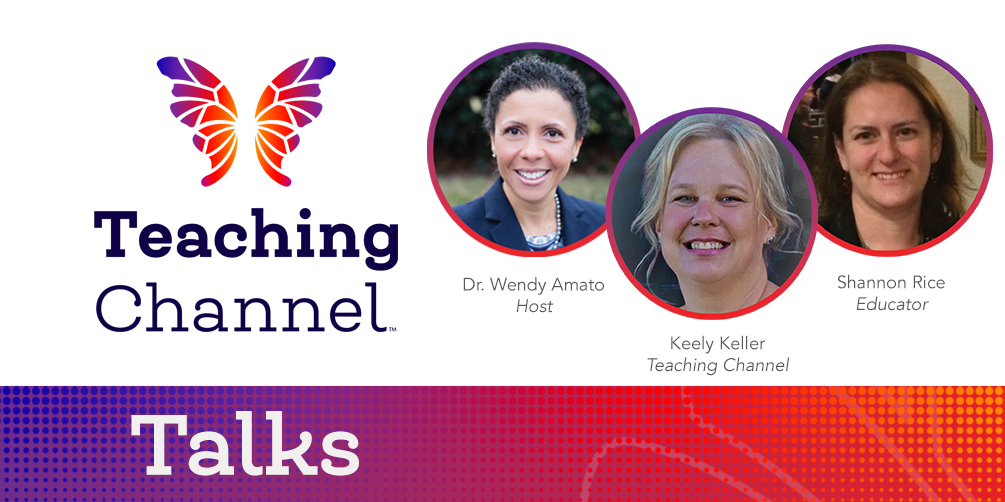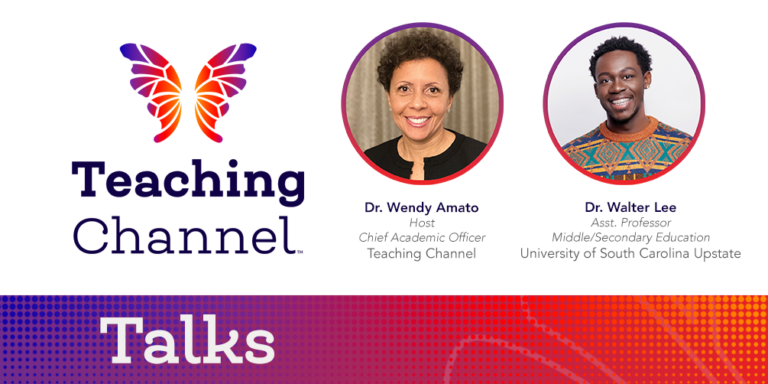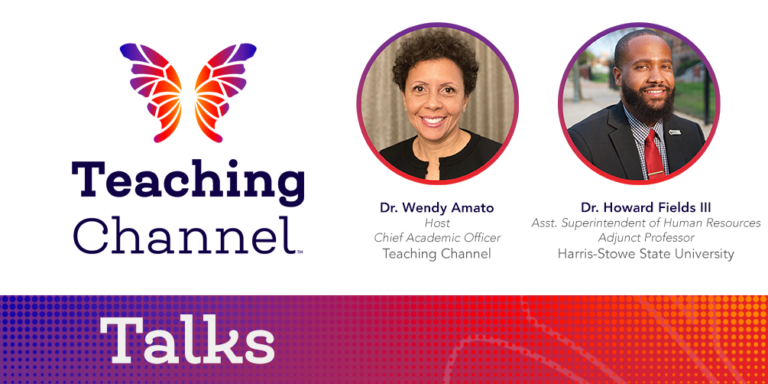To close out our 3-part series on the recent School Year Success! webinar, we have a special bonus episode of Teaching Channel Talks featuring Keely Keller, and Shannon Rice. Join our host Dr. Wendy Amato as she sits with our special guests one last time to discuss actionable behavior strategies you can use in your classroom right now.
Just tuning in? Read on for some of the topics we’ve covered in our discussion of positive behavior supports!
As teachers, we always want to put ourselves in the best position for school year success and that means making a proactive effort to instill positive behavior in the classroom.
Behavior can be one of the most challenging things that teachers face as they’re working with their classes throughout the year. It takes time, and patience, and can be difficult to support on your own. That’s why it’s very important to collaborate with the people on the teams around you and support each other when things get challenging because they will. And then, of course, celebrate when things go well, even the little wins.
Redefining How We Think About Behavior
Often when we talk about behavior it tends to be about inappropriate, or “bad” behaviors. However, behavior isn’t always negative. Students exhibit behavior, both positive and negative, to try to communicate what they need. Behavior is a form of communication and behavior is teachable.
One of the most important things that we have to think about is that behavior is all about context for our students. For example, it’s appropriate to yell and scream at a sporting event when we’re cheering for our favorite team, but maybe that behavior is not so appropriate when we’re in the hallway or the classroom. Sometimes, we have to teach that context to our students. It’s not necessarily about whether a behavior is good or bad, it’s about context and we have to be intentional as we teach those things.
Using Proactivity to Set Expectations
Proactivity is acting in anticipation of future problems, needs, or changes. In the context of behavior, proactivity might be creating a visual for your students, teaching expected behaviors at the beginning of the school year or prepping a break station for the students who need it. Proactivity is all about planning!
As educators, we can help our future selves by taking the time to think through all the routines and procedures that we want our students to engage in throughout the year and then creating a plan for how we will teach those. These aren’t things our students come to class on day one knowing how to do, we must go through and teach our expectations. And that time invested in the beginning will gain us time later, that’s where this proactivity comes in.
The benefits of being proactive aren’t just making teachers’ lives easier, they are about students and student learning. If your students understand the routines and procedures of the classroom, it decreases their cognitive load, so when they come into the classroom, they already know what they need to do, leaving them with more brain power to focus on instruction!
How to Handle When Things Go Wrong
When we talk about Positive Behavior Supports, there is a 3-tiered system. When things go wrong, typically you’ve already taught the expectations to the class, but you are noticing that a certain student is repeatedly not following the learned procedure. This is an opportunity to consider that all students coming in with behavior are unique. They are all different with varying strengths and they may need a different plan.
The student may need intervention, or they may need something even more in-depth, like a functional behavioral assessment or an intervention plan. In every scenario, it is important to keep tabs on what you have taught, who is understanding it, and who might be needing extra support.
Just because we’re looking at teaching behavior, doesn’t mean we let good teaching go out the window. Good teaching is good teaching whether we’re talking about academic skills or behavioral skills. Behavior is not personal! Even if it can be difficult to separate ourselves, we still need to stop and think about what skills the student is missing and what are they communicating to you with their behavior. It helps to remember that a student isn’t giving you a hard time, they’re having a hard time.
Handling Disruptive Behavior In The Classroom
The first thing to look at is how severe is the behavior. We want our classrooms to be safe, fun, and positive, so a minor disruption that has everyone laughing but lets you dive back into instruction is different from repeated, attention-seeking behavior. With repeated behavior, you may start to think about what you can do to give the student the attention they need from peers before instruction starts. Or maybe you might try spending 5 minutes with the student at the beginning of the class period so that they get the attention that they’re seeking from you before you move into instruction. We can be more effective by breaking down behavior not as “what” the student is doing, but “why” they are doing it, and then get ahead with proactivity.
Handling Impulsive Behavior In the Classroom
We must find ways to teach students about their impulsivity and help find avenues for them to express themselves. A student who has some physical impulsivity might need something to do with their hands. Maybe they need a piece of velcro under their desk that they can rub with their fingers to have a little bit of tactile input or a band on their chair that they can kick with their feet, so they have a little bit of continual motion. A student who has verbal impulsivity might need an opportunity to have some verbal sharing with a peer because they continue to blurt regularly, or might need a nonverbal connection or visual cue with their teacher when they are ready to say something. Knowing your students and understanding the why behind the behavior is the real key to intervention.
Rewarding Positive Behavior
Rewards or reinforcers have a place and it comes down to intentionality. What is your purpose? If you’re looking at reinforcing a behavior, a reinforcer can have a purpose. We all reward ourselves with different things from a trip to get a coffee or getting the stars on our smartwatches after working out.
It’s about getting to know your students, then asking them what motivates them. High school students too! Just because students are taller and older doesn’t mean that they aren’t interested in working for something. When working with high school students, we asked them what they would like to earn. While coupons for food were a big hit, one student asked if they could earn tickets toward wearing a crown one day! Sometimes the real reward comes down to the acknowledgment, the interaction, and the relationship they are building with you as their teacher.
Looking for more information on Positive Behavior Supports?
Join Keely Keller, Shannon Rice, and our host Dr. Wendy Amato for a special bonus episode of Teaching Channel Talks, or catch up on the rest of the 3-Part series here.
Additional Resources
- Keely Keller has shared a free eBook for our audience, A Proactive Guide to Positive Behavior Across Learning Environments.
- For new teachers looking for classroom strategies, check out Shannon Rice’s book The New Teacher’s Guide to Overcoming Common Challenges.






